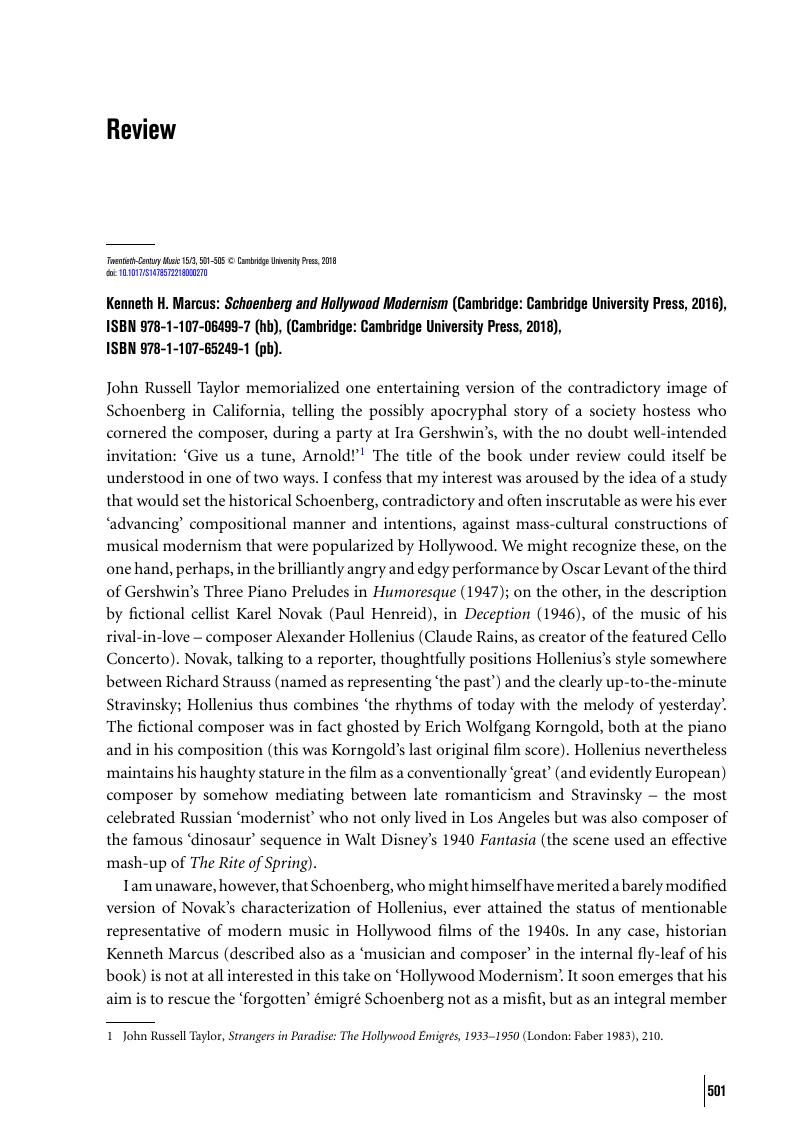No CrossRef data available.
Published online by Cambridge University Press: 29 November 2018

1 Taylor, John Russell, Strangers in Paradise: The Hollywood Émigrés, 1933–1950 (London: Faber 1983), 210Google Scholar.
2 The linguistic nuances of ‘exile’ as compared to ‘emigration’ are complicated by Marcus's latter deliberate usage of ‘immigration’, as in ‘Eisler later immigrated to the German Democratic Republic’ (94) or Vinaver ‘lived in New York and briefly Los Angeles before immigrating to Israel’ (180).
3 Marcus's reference (254) to Mann's The Story of a Novel – retitled The Genesis of a Novel in England – cites ‘p. 217’; this is a typographical error and should read ‘p. 172’.
4 Marcus is not the first to confuse the Einstein cousins Alfred and Albert (see p. 10 and Index p. 391); it was clearly Albert with whom Schoenberg was given to comparing himself. Alfred was the musicologist, who also made his way to America in the 1930s.